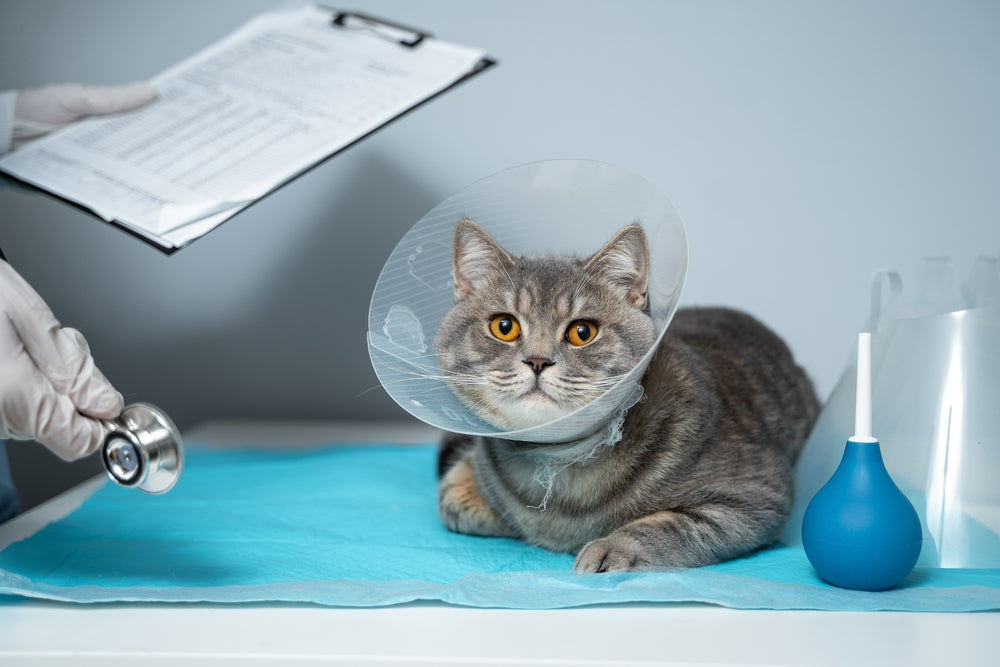
Do you know about cat spaying? It’s something all owners of female cats should be aware of. It’s the best way to protect your cat’s health and wellbeing, and it’s a really simple operation. All cat owners want what’s best for their furry friend, so read on to find out everything you need to know about cat spaying.
What is Cat Spaying?

Cat spaying is the removal of a female cat’s uterus and ovaries. Although this might sound a bit scary and severe, it’s actually a very simple operation that your cat will recover from quickly. Normally, your cat will visit the vet and come home all on the same day. Your cat will need to fast before the surgery which means you can’t feed her at all the night before. This is really tricky if you have an outdoor cat, so keep her indoors the day before and watch out for her trying to slip out of the door as you come in and out! Fasting means she can be anesthetized safely. Drinking water is absolutely fine, though.
Your vet will tell you what time to bring your cat to the clinic. When you arrive, your cat will usually have a general health check, to make sure she is fit enough to be operated on. Your vet will talk you through the procedure, probably get you to fill in some paperwork and your cat will be admitted into surgery. You can leave your cat in the hands of your vet, who will call you once your kitty is ready to be collected.
Tired of your home smelling like you have a cat?
15% off PrettyLitter
Try it today Use code: PRETTYBLOG
When Should Cat Spaying be Done and Why?
Female cats are usually spayed before they reach five months of age, but your vet may recommend performing the operation even earlier, possibly as young as eight weeks old. There’s a myth that you should let your cat have at least one litter of kittens before spaying her. This simply isn’t true. There are no health benefits to allowing your cat to have kittens, and of course, finding homes for a litter of kittens can be really difficult.
Cat spaying prevents unwanted pregnancies, which reduces the number of cats that end up homeless or in shelters. If a female cat becomes pregnant when she is still a kitten herself, this can be really detrimental to her health. Conversely, there are real health benefits to spaying your cat. It can prevent various diseases including pyometra, a life-threatening infection of the uterus. Spayed cats have a much better chance of a long, healthy life.
What Happens After your Cat is Spayed?

She may be off her food to start with, but this shouldn’t last more than a day. Talk to your vet if she turns her nose up at food for more than 24 hours. Try her with some chicken or tuna to try and coax her into eating. If she’s eating fine, there’s no need to restrict or change her diet. Feed her as you always have.
Keep an eye on the surgery site to make sure it stays clean. Keep an outdoor cat indoor until the incision has totally healed, to prevent her dragging her freshly stitched skin through hedgerows! If after three to five days the wound seems swollen or infected, see your vet. If you cannot stop your cat licking their wound, speak to your vet about getting a cone to prevent this. You know, like the cone of shame from the Disney film ‘Up’! They won’t be happy about this, but if it keeps the wound dry and clean, they’ll thank you in the long run.
Cat spaying is quick, easy and has so many benefits for your pet. Do you have female cats? Did you get them spayed, or are you thinking about doing so? Let us know in the comments!
----
Don't forget to follow us on Instagram: @prettylittercats
----
Delivered straight to your front door, every month. We’ll even pay your shipping.

Follow Us